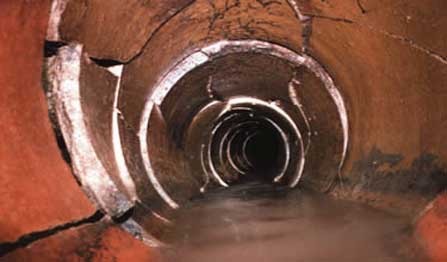How to Fix a Broken Drain Pipe Underground
As industry experts, we recommend several stages when you plan to repair a broken pipe in your garden or anywhere on your property where your drainage system runs.

Step 1: Locating your damaged pipe.
To know what to do to fix a broken drain pipe that’s underground, you must locate it. We recommend a CCTV drain survey to identify the pipe's location and highlight any issues.
Step 2: Digging up your pipe.
Once you have located the section of the broken pipework, dig down and find the section you will be working on. After this, dig under the pipe for about six inches to provide enough room to work. Ensure you’ve scanned the area to identify any gas lines or electrical circuits (you don’t want to cut through them). If the pipe is too deep, we would not recommend proceeding with the excavation. Instead, please contact ASL, and we will send our team to safely excavate a trench to begin work on the affected pipe.
Step 3: Cutting through your pipe.
Once you have located the broken section of pipe and cleared the area around it, you will need to cut the section away from the rest of the pipe. To do this, measure about two inches on either side of the pipe break and mark it out. This will help you cut accurately.
You may need industrial, or at least very powerful, tools to complete this step. If you need advice on which tools are best suited to a job, such as cutting through a drainpipe, call us, and we can help. You must always wear PPE in this instance and follow the manufacturer’s guidelines when using power tools.
Step 4: Measuring and cutting a new pipe section.
Before adding a new section of pipe, measure the damaged section you are replacing. This will help you determine the length of the latest piece that will replace it. If the pipe is not the correct length or diameter, it may leak when the section is replaced.
Use flexible couplings to cover the existing pipe ends, fit the new pipe section into its place and then slide the couplings over to cover the new section. If done correctly, this will seal the pipe, preventing leaks and leaving it fully enclosed. Ensure you have the correct fittings, the replacement pipe size, and the associated measurements to ensure a proper fit.
Step 5: Refill the hole.
When the pipe has been repaired and sealed, flush the toilet a few times to ensure it is no longer leaking. Then, surround the pipe with shingles and then backfill the hole. After this is completed, you will have finished repairing your pipe.
What we do
We can perform most repairs on underground pipes without digging, and it begins with a CCTV survey of your drains to locate the damaged section of your system. Once we have identified the cause of the damage, we can insert a liner to seal cracks or re-round and line pitch fibre pipework, whichever is required.
Visit our drain lining page for more information on this service.
If you have a broken underground pipe or have found signs of one, contact ASL today by calling 0800 181 684. We are passionate about what we do, and we want our customers to receive the best possible service. We will do everything we can to ensure your pipe is repaired and your drains are flowing properly again promptly.

